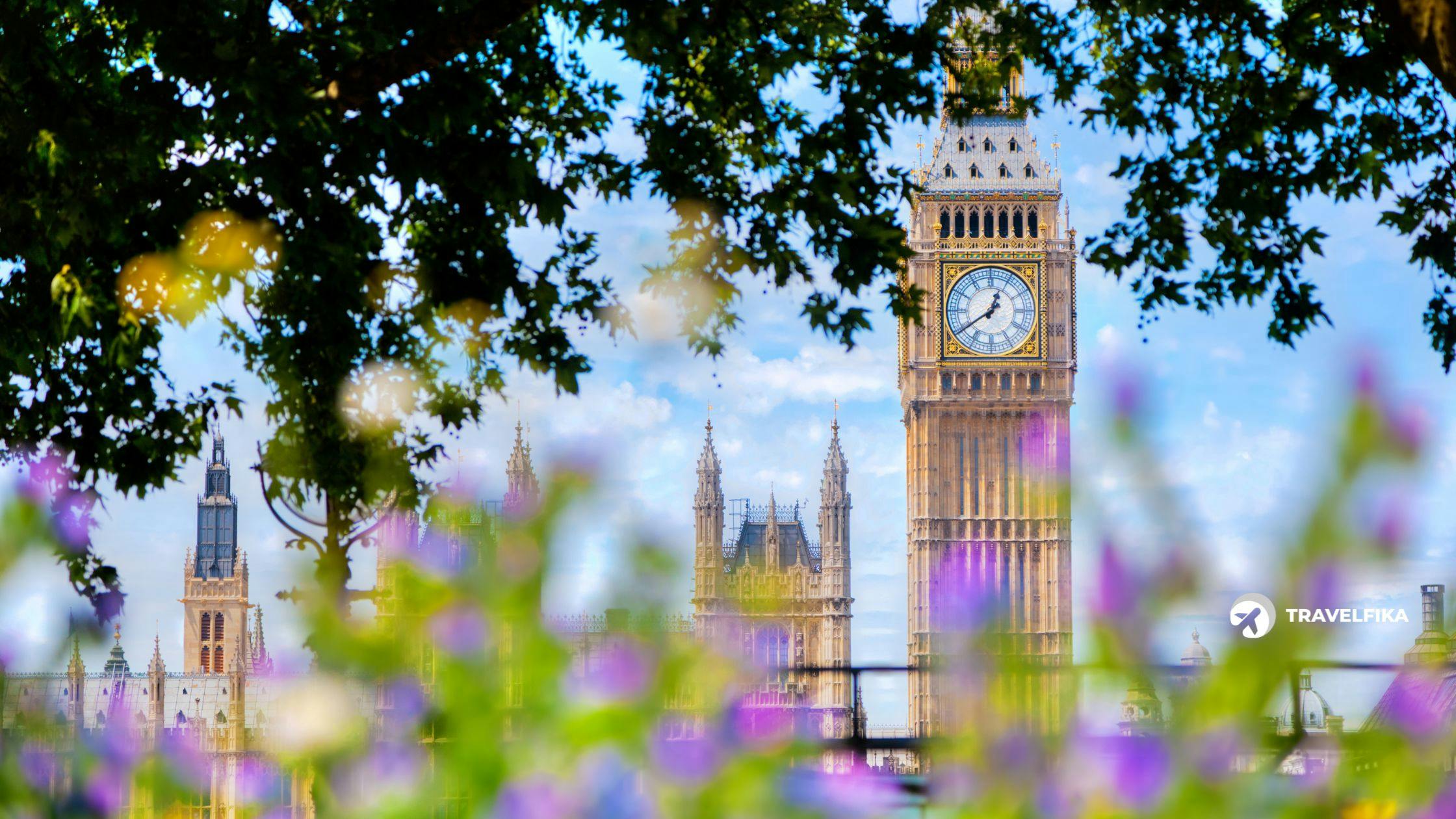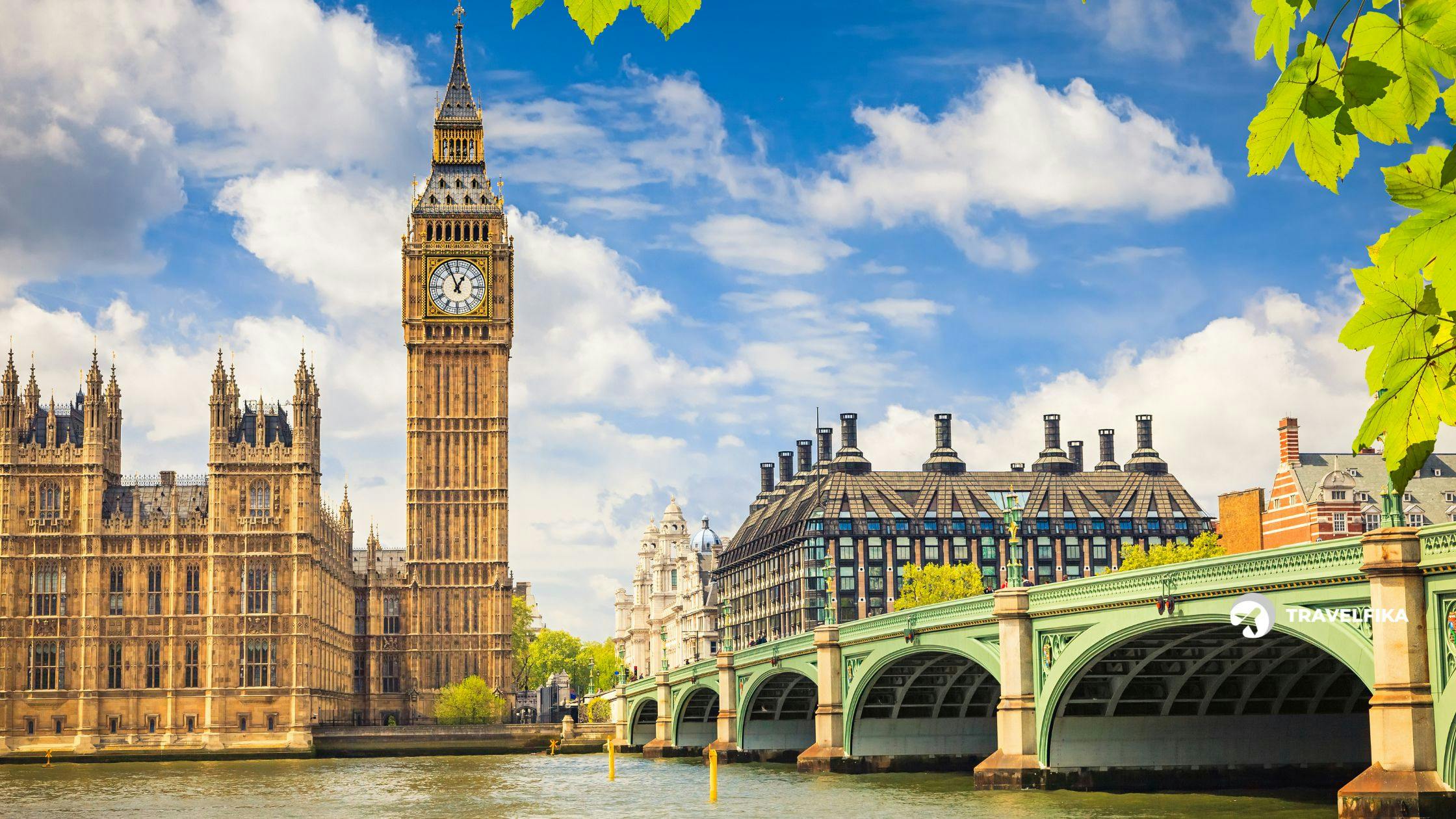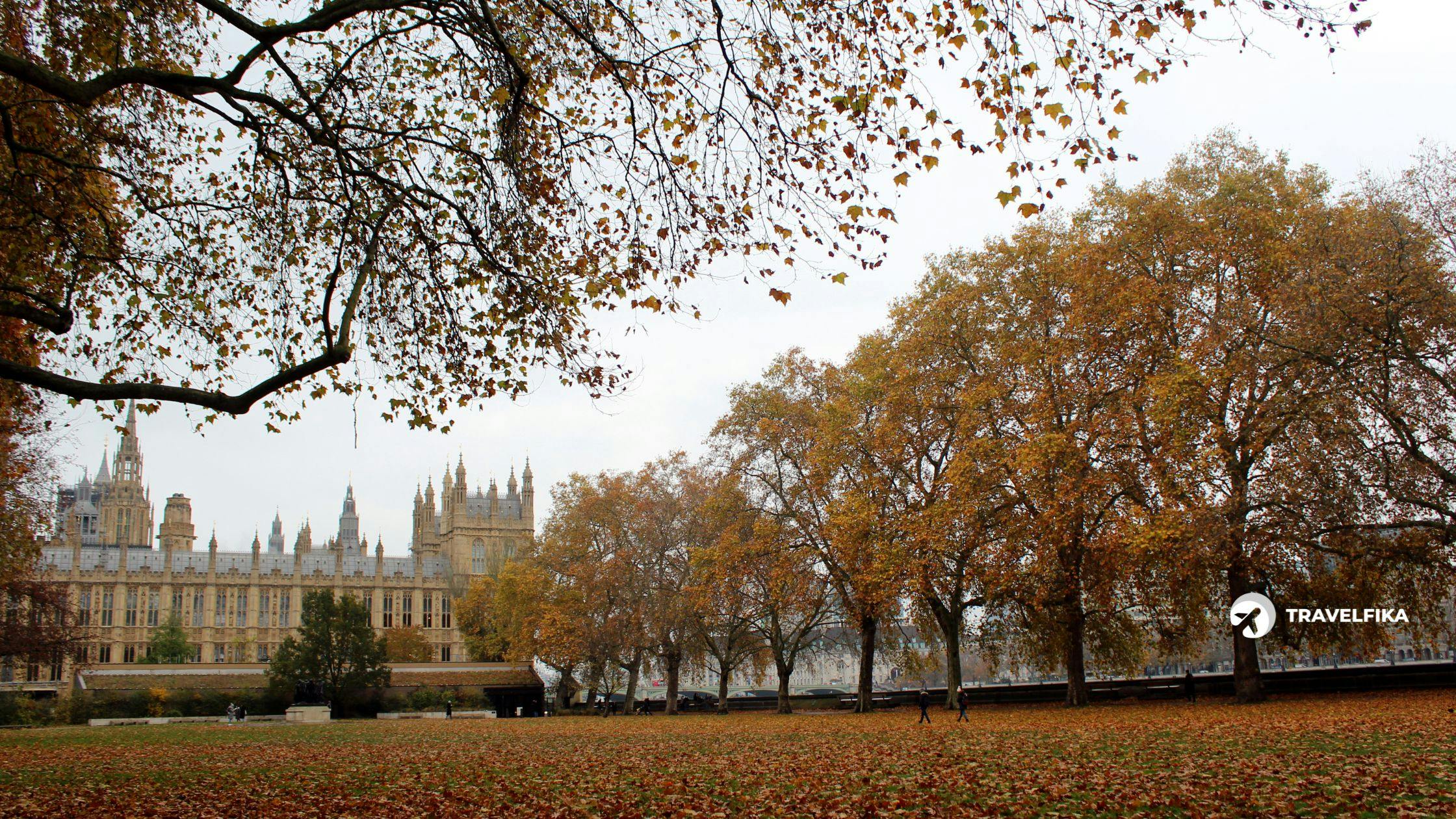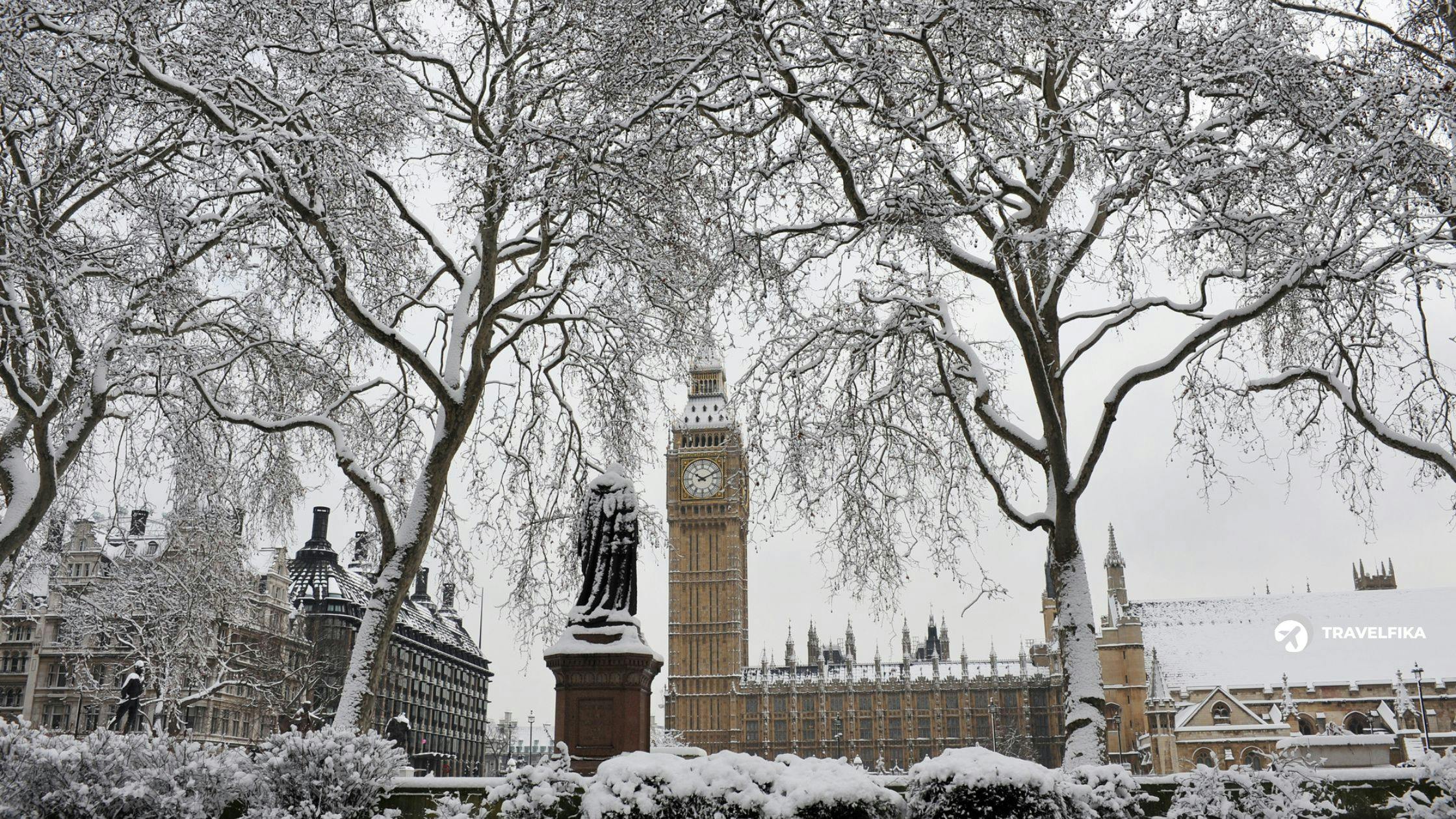Best Time to Visit London

London is a city that dazzles visitors all year round. Whether you're drawn to its iconic landmarks, royal heritage, world-class museums, or diverse neighborhoods, there's never really a bad time to explore the UK’s capital. The city's rich history meets modern charm in every season, be it the daffodils of spring in Hyde Park, lively summer festivals along the Thames, crisp autumn strolls through golden-hued streets, or the magical Christmas lights adorning Oxford Street in winter.
However, your experience in London can vary greatly depending on when you visit. Spring and autumn bring milder weather and fewer crowds, perfect for leisurely sightseeing. Summer is packed with energy and events, while winter offers festive charm and budget-friendly travel deals. Each season has its own unique vibe and perks.
That’s why choosing the best time to visit London really depends on what you're looking for. Whether you’re chasing good weather, seasonal events, fewer tourists, or affordable prices, this guide will help you pinpoint the ideal time to make the most of your London adventure.
Overview on Best Time to Visit London Based on Travel Goals
Not sure when to plan your London trip? Here's a quick guide based on what you're looking for. Each season offers something special, so pick the one that fits your travel goals best:
- For Sightseeing:
Best Months: March to May, September to October
These months offer pleasant weather, blooming parks in spring, and fewer tourists compared to summer. Ideal for exploring landmarks and museums without long queues.
- For Festivals & Events:
Best Months: June to August
London comes alive in summer with open-air concerts, parades, food festivals, and sports events. Expect lively streets and a vibrant atmosphere, but also larger crowds. - For Budget Travel:
Best Months: January to March
These are London’s off-peak months. While it’s colder, you'll find cheaper flights, discounted hotels, and fewer tourists at major attractions.
Learn about London travel expenses and how they vary by time of year.
- For Christmas Magic:
Best Month: December
London turns into a winter wonderland with twinkling lights, holiday markets, festive shows, and ice rinks. A great time to soak in the holiday spirit despite the chill.
Explore London by Seasons – What to Expect
Things to Consider Before Choosing Your Travel Dates
Before you book your trip to London, it's important to consider a few key factors that can shape your overall experience, from the weather and budget to crowds and cultural events. Here's what to keep in mind:
Weather Preferences
London’s weather is famously unpredictable, but knowing the seasonal trends can help you plan a better trip. Here's how the weather typically looks throughout the year:
- Spring (March to May):
Temperatures range from 10°C to 17°C. Expect moderate rainfall and a refreshing atmosphere. This season is known for blooming flowers and scenic parks, making it ideal for nature lovers and photographers. - Summer (June to August):
The warmest months, with average temperatures between 18°C and 25°C. Rainfall is generally low to moderate, and the city buzzes with festivals and outdoor activities. Perfect for those who enjoy lively street scenes and long daylight hours. - Autumn (September to November):
Cooler weather returns, with temperatures hovering between 10°C and 17°C. Rain is moderate, and the fall colors in parks make the city look postcard-perfect. It's a quieter, more peaceful time to visit. - Winter (December to February):
Expect cold days with temperatures ranging from 2°C to 8°C, and moderate to high chances of rain. The festive vibe during Christmas makes up for the chill, but pack warm layers and waterproof clothing.
Tip: If you prefer dry weather, consider traveling in late spring or early summer. Still, always bring a compact umbrella—London weather loves surprises!
Crowd Levels & Pricing in London
Your travel experience (and budget) can vary widely depending on the season. Here’s what to expect:
- Peak Season (June–August, December):
- High hotel and flight prices
- Large tourist crowds at top landmarks
- Great for festivals and holiday activities
- Book early to avoid sold-out experiences
- Shoulder Season (March–May, September–October):
- Balanced weather and manageable crowds
- Reasonable accommodation rates
- Ideal for sightseeing and park visits
- Off-Season (January–February, late November):
- Lowest prices on hotels and flights
- Quieter museums and attractions
- Shorter daylight hours and colder weather
Tip: If you’re traveling on a budget or dislike waiting in lines, go for the shoulder or off-season months.
Events and Festivals in London
London hosts major events throughout the year, which can affect availability and pricing:
- Summer Festivals (e.g., Notting Hill Carnival, BST Hyde Park) attract huge crowds and drive up prices.
- Winter Holidays (e.g., Christmas markets, New Year’s Eve) transform the city into a festive dreamland—but accommodations fill up fast.
- Spring & Autumn Events (e.g., Chelsea Flower Show, Bonfire Night) are less crowded but still lively.
Tip: Always check London’s event calendar before finalizing dates, especially if you're hoping for a quiet trip or looking to attend something specific.
Best Time to Visit London for Different Travelers
London has something for every type of traveler. Whether you're stepping into the city for the first time, planning a family holiday, enjoying a romantic getaway, or traveling on a budget, the best time to visit depends entirely on your preferences. Here’s a breakdown to help you decide.
When to Visit London For First-Time Visitors
If you're visiting London for the first time, your best bet is to travel during the shoulder seasons—March to May or September to October. These months offer a comfortable balance between good weather and manageable crowd levels. The spring season brings fresh blooms to the city’s iconic parks like Hyde Park and Kensington Gardens, creating beautiful backdrops for photos and picnics. Autumn, on the other hand, turns the city into a canvas of warm colors, with crisp air and fewer tourists at popular landmarks.
During these months, you’ll be able to explore places like the Tower Bridge, Buckingham Palace, and the London Eye without long lines or peak-season chaos. Plus, flight and hotel rates are often more reasonable than in summer.
When to Visit London For Families
Families with kids will enjoy London the most during school holidays, particularly in late July and August or December. Summer offers longer days and a variety of outdoor activities. Children will love open-air puppet shows, the Diana Memorial Playground, boat rides on the Thames, and family-friendly exhibitions at museums like the Science Museum and Natural History Museum.
December brings a magical charm with Christmas markets, festive lights, winter fairs, and special events like “Christmas at Kew.” Ice skating rinks pop up across the city, and department stores put on whimsical holiday window displays that kids adore. Just keep in mind that prices and crowds tend to increase during these popular periods—book accommodations and tickets early to avoid last-minute stress.
When to Visit London For Couples
London is one of Europe’s most romantic cities, and couples have plenty of dreamy options throughout the year. Spring (March to May) is especially enchanting, with cherry blossoms lining the streets of Notting Hill and Greenwich Park. Take romantic walks along the South Bank, enjoy scenic river cruises at sunset, or have a cozy picnic in Regent’s Park.
Alternatively, winter (late November to February) is perfect for couples who love festive vibes. Stroll hand-in-hand under twinkling Christmas lights on Oxford Street, sip mulled wine at winter markets, or take a ride on the illuminated London Eye after dark. The colder months also offer a cozy side of London—think candlelit restaurants, charming cafés, and warm fireplaces in historic pubs.
When to Visit London For Budget Travelers
If you’re traveling on a tight budget, the best time to visit London is during the off-season—January, February, or November. These months offer the lowest prices on hotels and airfare, and many tourist attractions also run off-peak promotions or discounts.
While the weather is colder and occasionally damp, the city’s top attractions—like the British Museum, Tate Modern, and the West End theatre district—are mostly indoors, making them enjoyable regardless of the temperature. Since tourist numbers are lower, you’ll experience a quieter side of London and won’t have to deal with long queues or fully booked tours.
Pro tip: pack warm clothes, use public transport (like the Oyster Card for savings), and take advantage of the many free attractions, including world-class museums and beautiful public parks.
Best Time to Shop in London

London is a paradise for shoppers, from high-street brands to designer labels, charming local markets to luxury department stores. However, the shopping experience can vary greatly depending on the season. Knowing when to shop in London can help you snag the best deals, avoid the crowds, and enjoy the festive retail atmosphere.
Seasonal Sales and Discounts
London's retail scene is known for big seasonal sales, especially during the winter and summer sale periods. Here’s when you can expect major markdowns:
- January (Winter Sales):
The best time for post-holiday discounts. Most shops slash prices on clothing, electronics, homeware, and more. These sales start right after Christmas (Boxing Day on December 26th) and last through most of January. - June to July (Summer Sales):
The summer sale season starts in late June and continues into July. Expect markdowns at popular stores like Selfridges, Harrods, Zara, and Marks & Spencer. - Black Friday (Late November):
Increasingly popular in the UK, Black Friday brings discounts across fashion, tech, and travel. Some deals start as early as mid-November. - Boxing Day (December 26):
A major shopping day with doorbuster sales in nearly every retail store, especially department chains.
💡 Tip: To get the best bargains, shop early in the sale season when inventory is fresh, or late in the season when final clearance offers are on.
Best Markets and Shopping Streets by Season
London’s shopping culture isn’t confined to malls, its iconic markets and streets offer year-round treasure hunts. Each season offers a unique vibe and lineup of goods:
Spring in London (March to May):
- Where to Go: Columbia Road Flower Market, Covent Garden, Spitalfields Market
- Why: The city blooms with color, and outdoor markets come alive with fresh flowers, handmade crafts, and spring fashion collections.
Summer in London (June to August):
- Where to Go: Oxford Street, Carnaby Street, Portobello Road Market
- Why: Long days and good weather make it perfect for strolling through bustling shopping districts. Look out for open-air pop-ups and summer fashion lines.
Autumn in London (September to November):
- Where to Go: Regent Street, Westfield London, Camden Market
- Why: Autumn collections arrive in stores, and markets are stocked with cozy accessories, art, and early holiday goods.
Winter in London (December to February):
- Where to Go: Harrods, Liberty, Christmas Markets at Southbank & Leicester Square
- Why: The festive season transforms shopping into an experience with dazzling window displays, seasonal gifts, and mulled wine at holiday markets.
Whether you're a deal hunter or looking for boutique finds, timing your London shopping trip around these sales and market seasons ensures a fulfilling and often budget-friendly experience.
Final Thoughts: No matter the season, London offers something unique, blooming gardens in spring, vibrant festivals in summer, cozy vibes in winter, and peaceful escapes in autumn. The best time to visit truly depends on your weather preference, budget, and travel goals.
Ready to turn your London dreams into reality?
Book your perfect London getaway with Travelfika’s curated London tour packages and start planning today!





